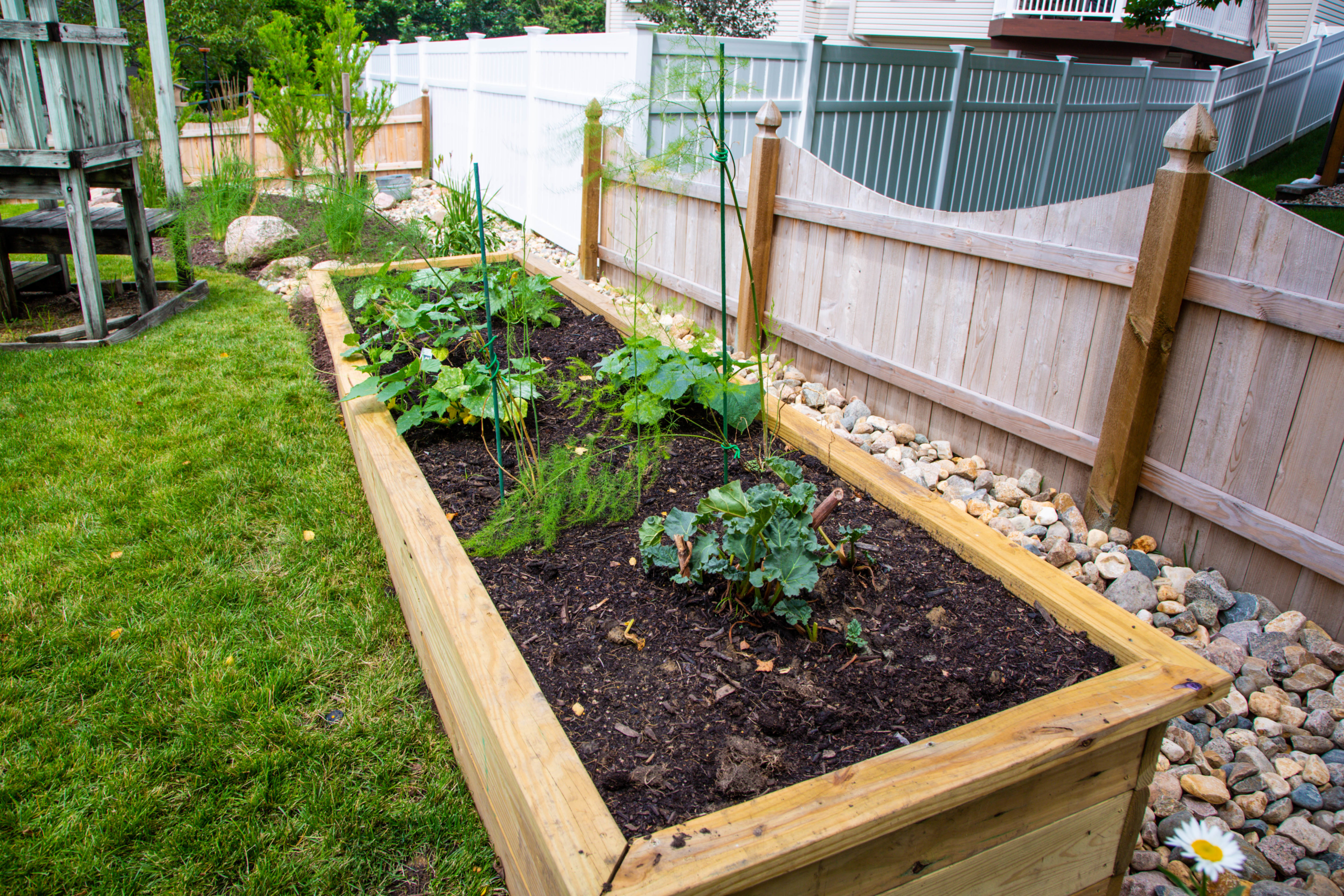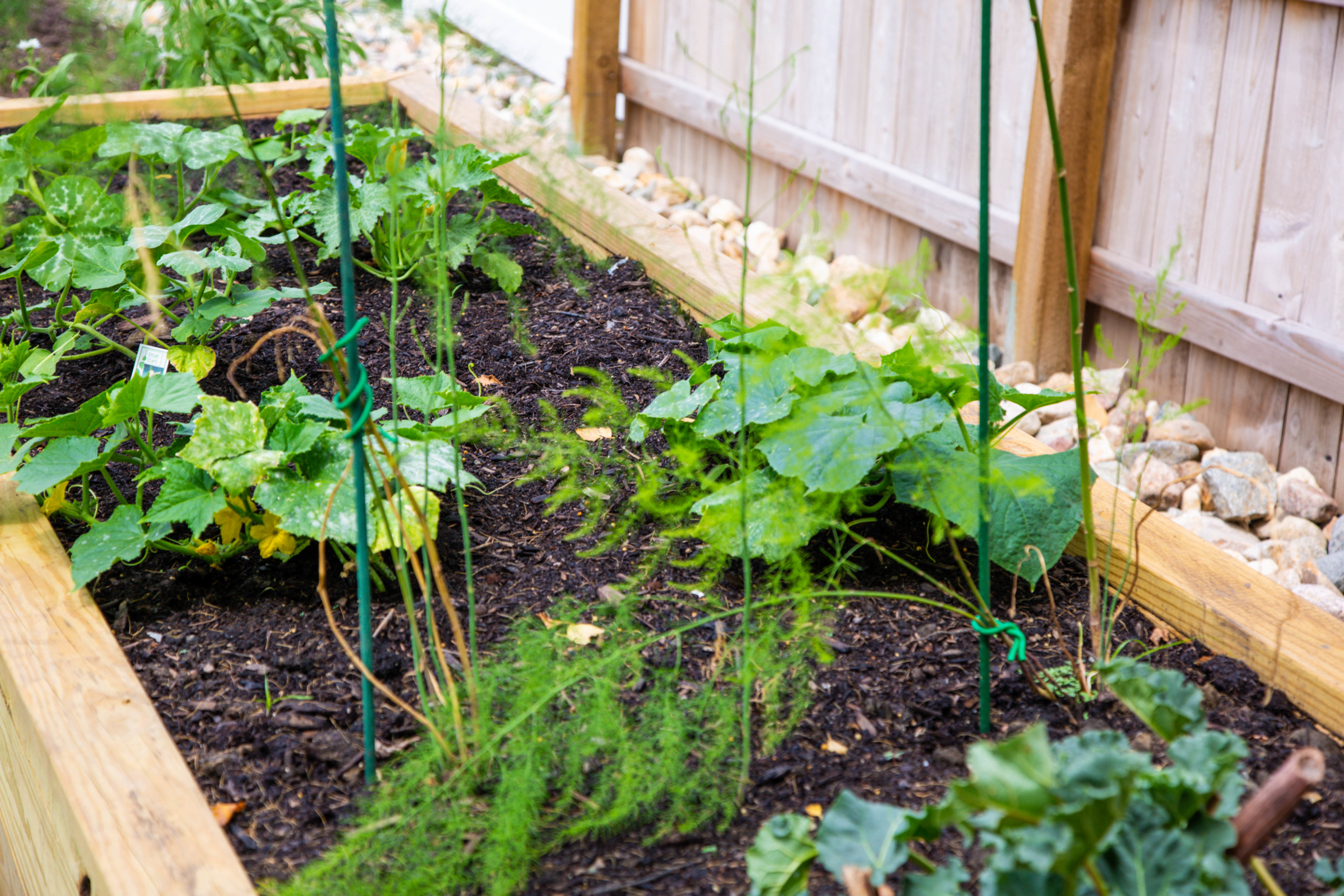Raised Gardening 101: Planning and Designing
Growing an edible garden is a great way to get your hands dirty and be rewarded with the quick production of fruits and vegetables. Raised gardens are great to consider whether you are a first-time gardener or an expert green thumb, there are plenty of benefits from growing in raised gardens.
If you are wondering what a raised garden is, it is a soiled space that is elevated above ground level. Essentially, they are large planting containers that do not move location without some minor construction. Raised gardens can simply be a built berm or mounded dirt. Most commonly they have structured walls that create an enclosure in which soil can be added in order to make the planting space raised. These structures can be built from wood, concrete block, natural stone, or even metal. The best wood lumber to use for raised gardens is cedar and treated lumber. Cedar is naturally rot-resistant and will not deteriorate when contact with moist soil is introduced. Treated lumber is usually pine of Douglas-Fir lumber that has been infused with a chemical to prevent rotting. The treatment stays pretty well contained within the wood boards themselves, it does not drip or leaked out of the wood, so they are safe to use for growing plants with edible food. Concrete blocks and natural stones used for raised gardens are similar if not the same block used for retaining walls. The block and stone have a deeper footprint than lumber so a raised garden constructed of block will need more square footage in the landscape than a wood-framed raised garden for the same planting area.
There are great benefits to having a raised garden. It is easier on your body. By elevating the bed space, you are removing the need to work on your knees when tending to the garden, and reducing the amount you need to bend over. Beds that are only raised 12 inches save on these strains. The taller the bed is, the easier it is on your back. When determining the height of your raised garden, keep in mind what you are going to grow. Different plants will have different growth habits, and you would not want to reach above your head to trim, maintain, and harvest your garden. Also, the taller the raised garden the more soil is required to fill it.
Raised gardens help keep some critters away. When planting in the ground the plants are exposed to anything and everything that is walking or crawling by, which makes them fair game to be nibbled on or completely eaten. Raising the garden prevents easy access for rabbits and slugs. It also keeps pets like dogs from being able to urinate directly on them.
You have better control of the soil quality. The soil at ground level most likely is not the highest quality soil for growing edible gardens. Depending on where you live the soil can be mostly clay, which does not drain well, or it can even have traces of lead in it. It’s important to choose a soil that has some mixture of compost to provide plenty of nutrients to promote healthy plants. Adding in a few bags of potting or garden mix will help the growth rate and production of the plants.

Having a raised garden will allow you to battle fewer weeds. Raised gardens do not require tilling or turn of the soil. Tilling can encourage weed growth as it buries the weed seedlings below grade, placing them in the perfect situation for propagation. Hand pulling any few weeds that are grown in the raised garden not only maintains a good-looking garden but prevents those weeds from spreading and reseeding. Gardens that are planted at ground level are susceptible to weed infestation from all sides. Raised gardens have a smaller accessible area for weeds to grow in.
Raised gardens provide a longer growing season. The raised soil thaws faster after a cold winter allowing you to plant earlier. As temperatures become cooler, the raised bed stays warmer than ground level as the depth of the bed is warmed by sun rays on the wall of the raised garden and the ambient temperature. The soil below grade stays a more consistent temperature throughout the day, so it takes longer to thaw when coming out of winter and begins to cool sooner with late-night lows at the end of the growing season.
The elevated soil drains better. In a flat yard or small valleys, there can be pooling, or water collection, after a rain. This creates an oversaturated soil that can drown out some types of plants. With a raised garden the plant root system is elevated above the grade where water runoff from rain flows so it will not be sitting directly in the oversaturated soil. The soil of the raised garden also has room to drain out to the original grade below. The framed walls of the raised garden help prevent erosion, so water runoff is washing away nutrient-rich soil.
There is a nice contrast of the wood or stone rectilinear frame to the bright green, sprawling foliage to add an aesthetic appeal. The framed walls give the garden some definition and purpose that separates itself from the rest of the landscaping. Pairing raised gardens with flowering perennials and shrubs provides more than added aesthetics, which help bring pollinators to the garden to help encourage a healthy ecosystem.
The use of raised gardens provides numerous benefits for both the garden and the gardener, no matter if you a novice or experienced expert.



